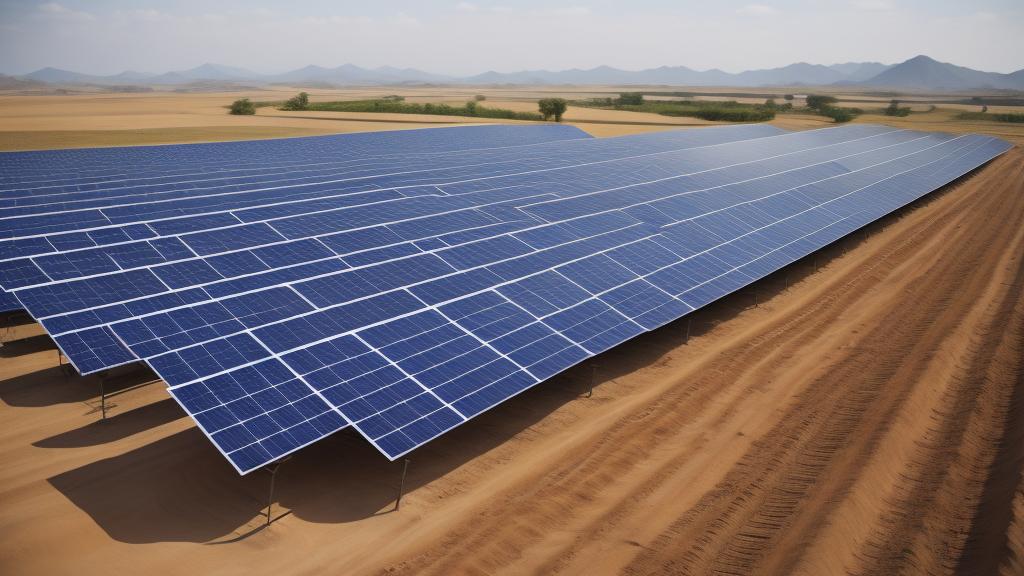As we navigate the complexities of climate change, sustainable agriculture has become more crucial than ever. Among the innovative solutions gaining traction is the use of solar panels in farming. Traditionally, agriculture has heavily relied on non-renewable energy sources, but solar panels offer a promising alternative that merges sustainability with efficiency. In this article, we explore how solar energy is revolutionizing agriculture and paving the way for a greener future.
**Harnessing sunlight for dual purposes**
Farmers are increasingly adopting agrivoltaics, a practice that combines traditional agriculture and solar energy production. By placing solar panels above crop fields, farmers can simultaneously generate electricity and grow food. This dual-purpose approach maximizes the use of available land and reduces the competition between food production and renewable energy generation.
Agrivoltaics presents a host of benefits. For instance, the shade provided by solar panels can help protect crops from extreme weather conditions, such as heatwaves and hailstorms, thus enhancing crop resilience. Additionally, the panels can help conserve water by reducing evaporation rates, which is particularly beneficial in arid regions.
**Reducing operational costs**
One of the most significant advantages of integrating solar panels into agriculture is the potential for cost savings. By generating their own electricity, farmers can reduce their reliance on grid power and mitigate the impact of rising energy prices. This self-sufficiency not only lowers operational costs but also provides farmers with greater financial stability.
Moreover, surplus energy produced by solar panels can be sold back to the grid, creating an additional revenue stream for farmers. This extra income can be reinvested into the farm, enabling further advancements in sustainable practices and improving overall productivity.
**Supporting sustainable practices**
Solar-powered irrigation systems are another transformative application of solar technology in agriculture. Traditional irrigation methods can be energy-intensive and costly, often relying on diesel pumps or electricity from the grid. Solar-powered pumps, on the other hand, harness the energy of the sun to extract water from wells or rivers, providing an environmentally friendly and cost-effective solution for irrigation.
By using solar energy for irrigation, farmers can reduce their carbon footprint and decrease dependence on fossil fuels. This shift towards renewable energy sources not only promotes sustainability but also aligns with global efforts to combat climate change.
**Empowering rural communities**
In many rural areas, access to reliable electricity remains a challenge. Solar panels offer a decentralized and accessible source of power that can transform the lives of rural communities. By adopting solar energy, farmers in remote locations can gain access to electricity for lighting, refrigeration, and other essential needs, improving their quality of life and fostering economic development.
Furthermore, the adoption of solar technology can create job opportunities in rural communities. The installation, maintenance, and operation of solar panels require skilled labor, providing employment for local residents and contributing to the overall economic growth of the area.
**Challenges and opportunities**
Despite the numerous benefits, the integration of solar panels in agriculture is not without challenges. Initial installation costs can be prohibitive for some farmers, and there may be technical and logistical barriers to overcome. However, government incentives and subsidies, along with advancements in solar technology, are helping to lower these barriers and make solar energy more accessible to farmers.
Additionally, ongoing research and development in agrivoltaics are continually improving the efficiency and effectiveness of this approach. Innovations such as adjustable solar panel systems, which can be tilted or raised to optimize sunlight exposure for both energy production and crop growth, are making agrivoltaics an increasingly viable option for farmers.
**A bright future for sustainable agriculture**
The integration of solar panels into agriculture represents a promising step towards more sustainable and resilient farming practices. By harnessing the power of the sun, farmers can reduce their environmental impact, lower operational costs, and contribute to the global transition towards renewable energy sources. As technology continues to advance and more farmers adopt solar solutions, the future of sustainable agriculture looks brighter than ever.
How solar panels contribute to sustainable agriculture

